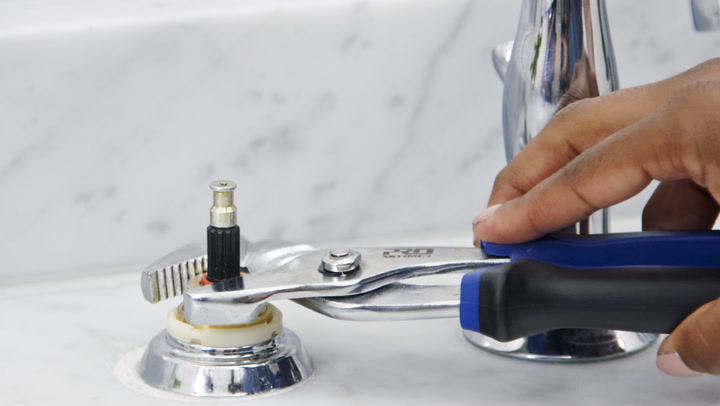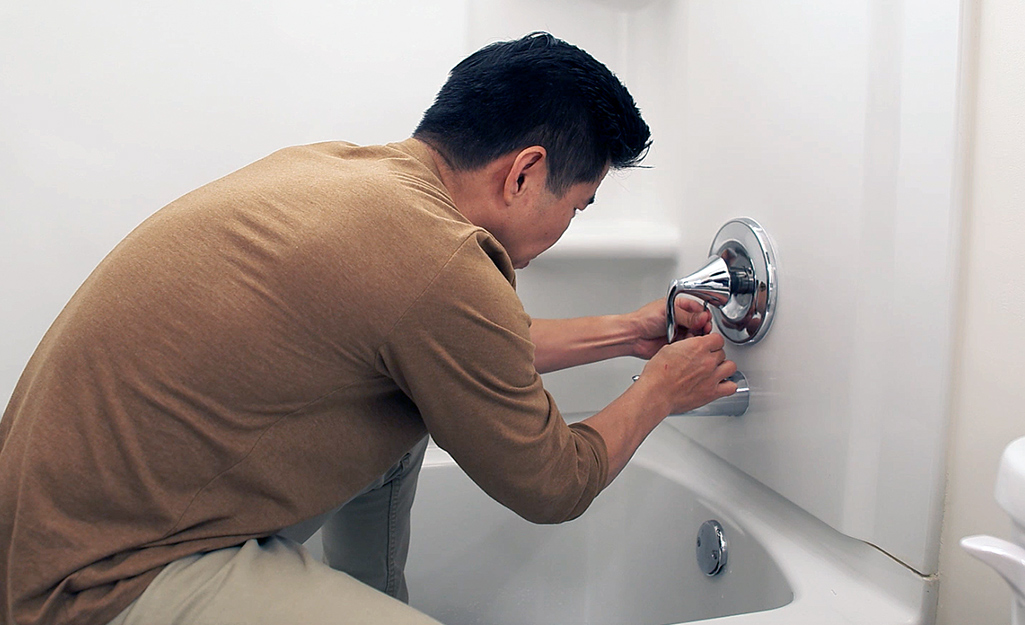Learning the Importance of Resolving a Malfunctioning Faucet
Learning the Importance of Resolving a Malfunctioning Faucet
Blog Article
The article author is making a number of good pointers relating to Why Are My Faucets Dripping (And Can I Fix It Myself)? overall in the content below.

Trickling faucets could look like a small inconvenience, but their effect surpasses just the inconvenience of the audio. From drainage to sustaining unnecessary financial expenses and health and wellness risks, neglecting a trickling faucet can bring about various effects. In this article, we'll look into why it's crucial to address this typical household concern quickly and properly.
Waste of Water
Ecological Effect
Trickling faucets add significantly to water waste. According to the Environmental Protection Agency (EPA), a solitary faucet trickling at one drip per secondly can squander more than 3,000 gallons of water annually. This not just strains water resources but additionally affects ecological communities and wildlife based on them.
Financial Expenses
Boosted Water Costs
Past the ecological impact, dripping faucets can inflate water bills substantially. The built up waste in time equates into higher energy expenditures, which might have been prevented with timely repair work.
Potential Building Damages
Additionally, prolonged dripping can lead to harm to fixtures and surface areas bordering the faucet. Water buildup can trigger discoloration, corrosion, and also structural concerns if left ignored, causing extra fixing expenses.
Wellness Issues
Mold And Mildew and Mildew Development
The continuous visibility of moisture from a leaking tap creates a suitable setting for mold and mildew development. These fungis not just compromise indoor air top quality yet also posture health and wellness dangers, particularly for individuals with respiratory system conditions or allergic reactions.
Waterborne Illness
Stationary water in leaking faucets can come to be a breeding ground for germs and other microorganisms, enhancing the risk of waterborne diseases. Contaminants such as Legionella microorganisms grow in stationary water, possibly causing severe illnesses when ingested or breathed in.
DIY vs. Professional Repair
Advantages and disadvantages of Do It Yourself Fixing
While some might try to take care of a dripping tap themselves, do it yourself repair services feature their very own collection of difficulties. Without proper expertise and tools, do it yourself attempts can worsen the issue or bring about incomplete repair services, prolonging the problem.
Advantages of Working With an Expert Plumber
Hiring a professional plumber ensures that the underlying cause of the dripping tap is attended to properly. Plumbings have the expertise and tools to detect and fix faucet problems effectively, conserving time and lessening the danger of further damage.
Step-by-Step Overview to Taking Care Of a Dripping Tap
Tools Required
Prior to attempting to deal with a dripping faucet, collect the required devices, including a flexible wrench, screwdrivers, substitute components (such as washers or cartridges), and plumber's tape.
Typical Tap Issues and Their Solutions
Recognize the sort of tap and the particular problem creating the drip. Usual troubles consist of damaged washers, corroded shutoff seats, or defective O-rings. Describe producer guidelines or online tutorials for detailed guidance on repair services.
Preventive Measures
Routine Maintenance Tips
To avoid trickling faucets, do regular upkeep such as cleansing aerators, inspecting for leaks, and replacing worn-out parts promptly. Additionally, consider installing water-saving devices or upgrading to much more efficient fixtures.
Importance of Prompt Fixes
Addressing trickling taps as quickly as they're discovered avoids further water waste and prospective damage, ultimately conserving both water and money over time.
Influence On Home Worth
Understanding of Well-Maintained Home
Maintaining a residential or commercial property in good condition, consisting of addressing upkeep issues like leaking faucets, improves its regarded worth and worth among prospective customers or renters.
Impact on Resale Worth
Features with well-maintained plumbing fixtures, including faucets, command greater resale worths in the property market. Attending to leaking faucets can contribute to a positive impression throughout residential property assessments and negotiations.
Environmental Responsibility
Individual Contribution to Preservation
Taking obligation for repairing dripping taps lines up with wider efforts toward water preservation and environmental sustainability. Every person's activities jointly make a considerable impact on maintaining valuable resources.
Lasting Living Practices
By focusing on prompt repair services and adopting water-saving behaviors, individuals add to lasting living techniques that benefit both existing and future generations.
Conclusion
Resolving a leaking tap exceeds plain comfort; it's a necessary step towards preserving water, lowering financial prices, and safeguarding health and wellness and residential or commercial property. Whether through do it yourself fixings or specialist aid, acting to repair dripping taps is a small yet impactful means to promote liable stewardship of resources and contribute to a healthier, extra lasting future.
How to Fix a Leaky Faucet: Step-by-Step Repair Guide
A leaky faucet may seem like a simple annoyance, but if it's not fixed promptly, that leak could cost hundreds to potentially thousands. From water damage to mold, mildew, and high water bills, even a tiny leak can be catastrophic if left unattended. Damage like this can even affect the overall value of your home, so it's important to take the right approach for leaky faucet repair. You may need the help of a plumber in some cases, but we've got a few tips you can try on how to fix a leaky faucet before calling the pros.
Four Faucet Types
When you're learning how to fix a leaky faucet, the first step is knowing what kind of faucet you're working with! There are four common types.
Cartridge Faucets
Cartridge faucets come in one- or two-handled varieties. In one-handled cartridge faucets, hot and cold water combines in a single cartridge. In the two-handled versions, hot and cold water are controlled separately and mixed in the faucet.
Ball Faucets
Ball faucets have a single lever you push up and down to adjust the pressure and rotate to change the temperature. A slotted metal ball controls the amount of water allowed into the spout.
Compression Washer Faucets
They're the oldest type of faucet, but they're still used in many homes — especially older ones. Compression faucets have two separate handles that, when turned, raise or lower the washer that seals a water valve. This valve stops water from flowing through the faucet when it is turned off.
Disc Faucets
Disc faucets rarely need to be repaired due to their maintenance-free design. The water flow is controlled by two discs — the upper one raises and lowers against a fixed lower disc, creating a watertight seal. If your disc faucet starts leaking, you may need to replace the seals or clean residue buildup from the inlets.
Fixing a Leaky Faucet
Step 1: Turn Off the Water
Whether you're learning how to fix a leaky bathtub faucet or how to fix a leaky kitchen faucet, always turn off the water supply to your working area when you're fixing a leak. The last thing you want is a flood added to your list of things to fix.
Look for the shutoff valves below your sink or around the tub and turn them clockwise to stop the water flow. If your faucet doesn't have shutoff valves, you may need to turn off the water for the whole house. Check to make sure it's off by turning the faucet on. If nothing comes out, you're ready to start the repair.
Step 2: Take Apart the Faucet
How you disassemble your faucet depends on the type of fixture you have. You can use a flathead screwdriver to remove the caps on top of the handle or handles for cartridge and compression faucets. Inside, you should see handle screws. Unscrew these with a screwdriver to remove the handle.
Disc- and ball-style faucets will typically have an inlet screw near the handle, and removing that will reveal the interior of the faucet.
Detach the Valve Stem
For cartridge- and compression-style faucets, you'll see the inner valve stem or cartridge once you remove the faucet handles. If you have a compression faucet, unscrew the brass valve stem. If you have a cartridge faucet, pull out the cartridge. If your cartridge has been in place for a while, it may require some tools or extra force to remove it due to mineral deposits.
Examine and Replace Parts
Once you've removed the parts, check them out to confirm what needs to be replaced. You may see corroded rubber washers, O-rings, stems, or cartridges. On a ball-style faucet, check the seats and springs for damage.
If you need to repair a leaky disc faucet, check the inlet and seals on the lower disc.
Once you determine what parts must be replaced, visit your local hardware store. Bring the damaged parts with you to ensure you can purchase the correct components to replace them.
Clean Valves and Faucet Cavity
If you've removed a stem or cartridge, you may notice mineral buildup in the faucet's threads. Use white vinegar to clean the valve seat by soaking it for a few minutes, then scrub it away with a soft toothbrush and rinse with warm water. You can also clean the interior of the faucet in the same way.
Reassemble the Faucet
Once your faucet is cleaned and the required parts have been replaced, it's time to reassemble it. Put the pieces back together and slowly turn the water supply back on. Doing this slowly is crucial because too much initial water pressure can damage the new hardware you've just installed.
https://homewarranty.firstam.com/blog/how-to-fix-leaky-faucet

We are very occupied with What Causes Leaky Faucets & How To Fix Them and I'm hoping you enjoyed the new post. I beg you pause to distribute this entry if you appreciated it. Thank you for going through it.
Report this page